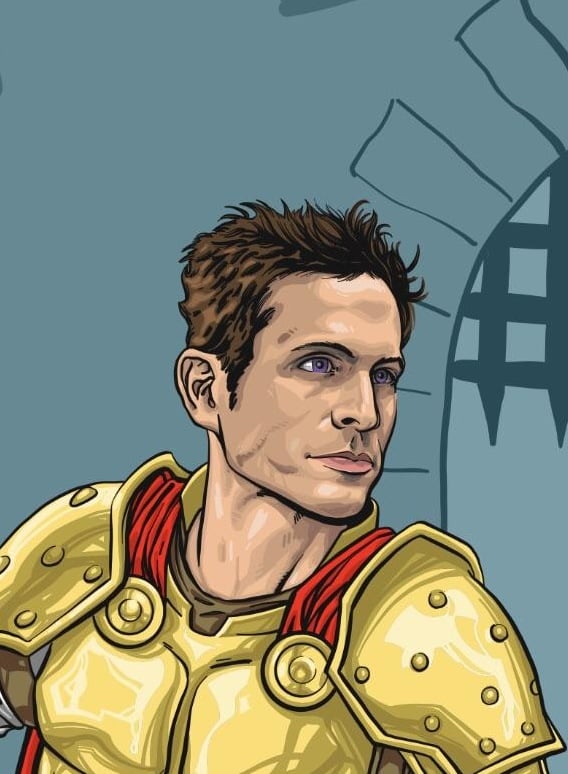Cars fulfill a very self-indulgent narrative. ‘I get to decide where and when I travel’, makes people feel “free” snd “important” even when millions of them are silently coming to the same decisions-- like going downtown at 09:00 on weekdsys-- that allow huge efficiency plays.
Notice how many ads feature fantasies of open roads and trips to faraway attractions, not the real world of “I need to sit in rush hour traffic from 6:30 on to get to the Work Factory”
Maybe public transit needs to focus its message on the freedom from drudgery it offers-- you don’t have to be staring at the driver in front of you, scanning the traffic reports
Exactly! This is why I love micromobility and quality public transit so much. With micromobility like electric scooters or bikes, I can zip past traffic in the protected cycle lanes in my city. With the frequent metro service in my city, I know I can show up to the metro station at basically any time and know it’ll be a max 5-minute wait for the next train. And when I’m on the train, I can just chill and scroll on my phone or read a book instead of stressing about traffic. The freedom to think about something that isn’t traffic.
Unfortunately as it stands in some places the infrastructure is awful. Take England for example; catching a train to London takes about 20 minutes for me, however there are often 10-15 minute delays that you now have to start accounting for, you also have to sit in a cabin with someone blaring their music that isn’t to your taste. Hopefully you’re not in a cabin with a toilet, because it’s going to stink of shit.
Now the return journey, fingers crossed it’s not cancelled otherwise you have another 40 minute wait for the next train! Last train home is a real anxiety inducing experience, will you be getting that train home or has it been cancelled? This is unfortunately all too common here. Sadly because public transport is for profit rather than a necessary service we have someone trying to do the bare minimum to make that money, and then pay the bare minimum to their staff who don’t give a shit. It all begins to unravel and people just have a better experience sat in that morning traffic which is a more consistent and pleasant experience to the public transport.
The problem is once they started to turn public transport into for profit, there is little way to turn back. They invite private companies to build the network, do the operation, now how can they go back to be non profit to be a public service to the people ? Unless they do subsidise fares which will look like they are siphoning money from government to private companies. It’s a no winner situation. If the government wants to nationalise the public transport they will have to spend a significant amount of money to buy them off , which may or may not be affordable to them.
I’d say it is more about
convinceconvenience. You decide when you leave and you leave from your door. You don’t risk being late to work because you missed the train by 1 minute (baring queues, but you get the point).This can also be achieved by high frequency transit.
Yeah, if the train comes every five minutes, that’s going to be way more consistent than traffic over time.
Every five minutes is not enough, every minute is definitely needed for rush hour. Thankfully, I live in London where tube trains come every minute, yey!
Really depends where you live. In my town I also decide when I leave, and I don’t risk being late because I missed the train by one minute. I’ll just take the next one. More risk of being late because of car traffic.
The problem when people compare cars to public transport is that they compare the current state of public transport in their area. We need to compare what would happen if we were spending as much billions as we do on cars.
If I’m doing a short trip locally in the city, I get that convenience out of my bike. There are times I would have taken a taxi somewhere, but when the app told me how long it would take for my driver to arrive, I just end up cycling there (often rolling past some long lanes of traffic in the process). That process can be even better if a city is built with safe biking paths.
Unfortunately that’s super weather dependent and seasonal. Plus, some of us would be a sweaty mess by the time we biked to where we needed to go.
Bikes don’t have to be seasonal. Some Nordic countries have well maintained and plowed biking networks and they see significant use throughout the winter.
I get heat warnings every other day lately, and unless it’s the rare cloudy day my UV index is at the top of the scale. I don’t worry about snow here, I worry about heat and sun. I don’t see a good solution for that unless you want to build covered bike routes with ventilation fans all through the metroplex?
That’s an unfortunate aspect of global warming I don’t see talked about a lot, as more places approach wet bulb, any kind of physical activity outdoor will become deadly.
For me it’s moreso the cold. But the act of biking should warm you up anyway. I think it really depends. The pathways are definitely clear, the question is if the weather would make someone drive vs bike.
I would’ve expected winter time to invalidate options of bike transport, but in city areas where the snow doesn’t stay down, it doesn’t end up happening as much. You’d of course want to bundle up for the weather, but then it’s not so bad. NJB has even talked about how there are some areas of the world that have permafrost under them, and they still prefer bikes. Rain, in my experience, is just miserable either way, so I’d usually prefer the flexibility to go when a downpour has halted rather than keeping a dedicated roof-mobile around to force my way through. That said, buses have been great for rain too, so again, flexibility.
The sweaty mess remark matches with my experience when I was unused to cycling, and when going uphill. The former becomes less true after even just a week or two of experience on the pedals; I didn’t even need a ton of acclimation after recovering from a leg injury. The latter may be a symptom of poorer city planning - which prefers bikes treading flatlands for long distances. It shouldn’t end up being tiring when you’re basically moving your legs in a walking motion at a low pace (traveling for chores is naturally going to be very different from the Tour de France).
At my old job we had showers there, so in the morning I’d just grab a quick bite and pedal off with my change of clothes in my backpack, and shower when I got there.
Hang on, the sweating goes down with more experience? I was under the assumption it’d just stay that way.
What it really comes down to for biking in the winter is how cold it is vs how much biking itself warms you up. I think most of the time it’s probably fine, but there are definitely conditions where it’d be unsafe but a car wouldn’t be.
What bothers me is that climate change is making those conditions more frequent, but biking is a good solution to combat emissions too.
I still would love to see a YouTube channel that takes the audio of car ads, and re-edits it with shots of the car in question just sitting in traffic.
Not to mention that well built mass transit achieves the same level of freedom. You’ll wait 5 minutes for the train and away you go.
I dunno what country you are from, but here in the US of A, the monopolies that own all the train infrastructure make sure to keep trains as public transportation as cost prohibitive as possible.
This always reminds me of the movie, Roger Rabbit. I was a kid and the movie taught me a much deeper/darker lesson than it was meant to teach me at that age. It still irks me.
I used to watch roger rabbit as a kid for other reasons
I think I know exactly what you mean and I was in 3rd grade.
deleted by creator
In case you need a hint, it was Doom’s plan.
Spoiler alert- the villain buys the transit system and shuts it down, basically steals a town it served, and plans to demolish the town so he can build a freeway over it and profit.
Big Auto has been destroying any idea of high speed rails for decades. Our trains are complete trash because of car lobbyists.
Muskrat is one of the biggest ones to blame.
And they expand the roads and freeways to have rails literally no place to go
Denver has decent rail, but I have to walk/bike across this insane hellscape of cars trying to kill me for 1 1/2 miles to get to the station
Because as much as trains and buses are great for everyday commuter movement (and having amenities within walking distance is key as well), there’s two issues:
- Changing the infrastructure and zoning of an existing city is much easier said than done. Ripping up concrete, tearing down existing business and homes to increase densification, that’s a huge undertaking.
- Trains never replaced the horse drawn carriage. You can never fully eliminate the need for cars because sometimes you need to move something big like a couch. Even if there’s less cars on the road, it’ll never be 0, as this also includes things like ambulances, and fire trucks that can’t rely on schedules.
Changing the infrastructure and zoning of an existing city is much easier said than done.
Fun how we had zero fucking problem doing it to every city in the country for cars. 🤷
Including destroying neighborhood-after-neighborhood with highway overpasses.
It in that case the people with power wanted the change. They could profit from it, so it came easily.
Once those same people can make money by densifying urban areas into rental hellscapes and monopolizing public transit, you’ll have that. And it will suck.
Literally destroying buildings to build surface level parking.
That’s what rentals are for. Yeah, there’s always going to be a need for low volume cargo transport and emergency response, but ultimately building cities so 90% of trips can be easily and comfortably accomplished via mass transit should be the goal. Nobody is suggesting transit can replace all cars.
The image in the post is of a yogi of some sort stating that electric cars are here to save the car industry first, and my impression of it is that it’s suggesting that exploring the idea of electric cars is unwise.
And hell yeah, efficient transit and walkable cities are the goal. But while we’re working on that goal, we should also focus on electrifying cars! Tackle the crisis in multiple ways. Because there’s no way we’re gonna stop using cars overnight, and if we can make cars more environmentally friendly while we taper off of them, that’s a win.
If a solution involves lining a billionaire’s pockets, he’s unlikely to offer you an alternative.
Electric cars are palatable for most of us because it just involves a straight swap. No lifestyle changes needed. It’s a much easier sell than lugging all your shopping home on the bus.
Yes. If we had infinite money, infinite time, and the ability to put people into stasis while we tear up entire cities to retrofit them for a train system… that still wouldn’t solve the problem.
If you live in a city, you are done. If you live on the outskirts of a city? Your life gets a lot less convenient, but you are good. Maybe a train runs from your “town” to the center of the city once or twice an hour. Cool.
If you live in a town an hour away? Nobody is running trains to a podunk mountain town or whatever. And even in some of the most public transit friendly countries on Earth (like Japan), it is a mess of bus and train connections where one or two significant delays can leave you stranded for the night.
And as an aside: holy crap do buses suck. They are the worst of all worlds. Almost universally poorly maintained. A driver who is constantly on the verge of losing their mind. Stuck in traffic. Prone to skipped stops and unannounced route changes. And again, that is even in civilized countries.
And I am definitely not renting a car whenever I need to go into town to hit up the Target or catch a plane. If only because rental companies tend to not like low volume out of the way locations that just result in cars not receiving maintenance. We have interns that come out every year and a lot of them realize that they need to drive an hour away just to pick up and drop off a rental…
Don’t get me wrong. I think a massive effort to make public transportation more viable is needed. But, regardless of what that rich guy with a cycling youtube channel constantly screams, we aren’t getting rid of personal vehicles until the entire planet is one interconnected megacity. And even then, it is just going to screw over the people who aren’t fortunate enough to live close to a transit stop.
EDIT: Just as a few examples of even places with good public transit being a mess the moment you get away from the city center and the touristy bits.
Better part of a decade ago, I was in the London area of the UK for a couple months. I stayed in a town about 50 miles outside of London proper, but getting into the city was generally a 20 minute train ride to Paddington and trains left a couple times an hour. It was amazing and I loved it. And then I started dating a girl who lived in (if memory serves) Kensington or Hammersmith or one of them. About 3 or 5 miles away from “London” proper, but she basically had the exact same commute. Minimal lines went to where she lived and the stops required meant she also started her weekends with a 20 minute train ride to Paddington and then… And that just broke my brain
And, more recently, I spent a few weeks in Tokyo. I stayed on the outskirts of Kabukicho because it was cheap and in the city center (and later I would learn WHY it was cheap AND start the Yakuza/LAD series with a love of Kamurocho). Trains were perfect and I could basically get anywhere at any time with very minimal commuting hassle.
Until I wanted to go on a tour of a sake distillery out in Ome. Outskirts of the tokyo megacity and, if all went according to plan, about an hour and a half by train with two-ish connections (been a couple years). And I remember needing to piss like my life depended on it after drinking WAY too much sake, making my way back to the train station and having to:
- Wait about 40 minutes for a train to arrive
- Get to the station where I need to make my connection
- Frantically move from one platform to another
- Miss the train by about 30 seconds
- Wait another 20 minutes for a new train to arrive
And that was all to go from a very touristy part of town to a very touristy destination. Albeit, I might have done a better job of making that connection if I hadn’t been day drinking for an hour or two by that point. But just pretend I am a responsible adult and was wrangling children or something.
And that is the thing. Walkable cities are AMAZING and everyone should strive for those. But unless you are rich enough to live in the city center, you are still going to deal with a lot of headaches.
Yes. If we had infinite money, infinite time, and the ability to put people into stasis while we tear up entire cities to retrofit them for a train system… that still wouldn’t solve the problem.
Cars haven’t existed forever and we managed to build places around them. There’s no reason we can’t start building everything new around other modes of transport.
If you live in a city, you are done. If you live on the outskirts of a city?..
I live in Switzerland, and none of the problems you mention in the next few paragraphs exist here. I mean frequency of public transport isn’t as good out of the cities, but I can get a bus or train to pretty much anywhere a car can get to, and some places they can’t. The buses are nice and work well, they have priority in the city so they don’t get stuck in traffic. I can get train, tram, bus, or bike to the airport no problem and if I need something bigger than I can carry I’ll just get it delivered. Yes Switzerland is rich but there’s a lot of money to be saved if it wasn’t being spent on cars, car infrastructure, and all of the externalities of driving. It’s also small, but our trains don’t go particularly quickly.
Even then, the vast majority of people in developed countries (and the majority worldwide) live in urban areas. If the people living in podunk towns need to drive, power to them. Focusing on urban areas will have a bigger impact.
But unless you are rich enough to live in the city center, you are still going to deal with a lot of headaches.
And the alternative is being rich enough to afford a house in the suburbs AND a car for every member of the family? Walkable doesn’t have to mean the city centre, and it’s much easier to achieve if you don’t have to kowtow to a bunch of suburbanites who want to drive their SUVs through your neighbourhood.
First: Your baseline is Switzerland? The 6th highest GDP per Capita (how the hell is Ireland 5th?!?!?!) which ranks 132nd for area.
Again, if you live in Tokyo or even freaking New York City (arguably all of New York+New Jersey but upstate NY is REAL republican), you are more or less good. You might be a bit inconvenienced if you don’t live near a rail station, but you’ll probably be looking at a 20-30 minute pre-commute.
The point is that once you have a larger land mass with people who live out in the sticks? Because
Second: Please, kindly, fuck off with the mindset that it is all rich suburbanites who are the problem. Don’t get me wrong, the suburbs are very much a massive problem. But that falls into that “twenty minutes to get into town” category I mentioned above… assuming we have the infrastructure.
The issue is actual poor people. No, not the rich guy making youtube videos about how all cities should be 100% bike friendly. No, not the kids in college who are starving artists who live off mommy and daddy sending checks every week. The issue is people in actual small towns. People who, generally, are actually pretty poor. There aren’t going to be regular trains that end up at their front door and even buses might do one route a day. It becomes a complete shitshow to get in or out. And that is where EVs really shine because you can having to “drive their SUVs through your neighborhood” and instead have a relatively clean personal vehicle to do supply runs.
Anime, but I strongly encourage watching… basically anything by Makoto Shinkai but especially Your Name or 5 Centimeters per Second. He very much loves to depict what it takes to get from The City (almost always Tokyo) to the sticks. Lots of trains, lots of buses, tight connections, and sometimes nights spent in an inn in the middle of nowhere. Which contrasts well with the regular push by certain youtubers to, ironically, encourage even more of a “small town” mindset by insisting that everyone should have everything they will ever need within a few square miles of their home. Because walkable cities are AMAZING. But we aren’t there yet and, arguably never should be, for the purpose of rural communities that are surrounded by nature.
First: Your baseline is Switzerland? The 6th highest GDP per Capita (how the hell is Ireland 5th?!?!?!) which ranks 132nd for area.
Please read my entire comment, I addressed this already.
Again, if you live in Tokyo or even freaking New York City (arguably all of New York+New Jersey but upstate NY is REAL republican), you are more or less good. You might be a bit inconvenienced if you don’t live near a rail station, but you’ll probably be looking at a 20-30 minute pre-commute.
The vast majority of people in developed countries live in urban areas, so for the vast majority of people that drive, this isn’t an issue. It is the rich suburbanites who are driving into cities.
Actual poor people are the ones who benefit the most from better infrastructure. Public transport is a lifeline for the homeless, and access to it is the biggest factor in whether they will be able to escape homelessness. Owning a car is really expensive, and The burdens of vehicle dependency fall disproportionately on marginalized people, especially those who are low-income and those who are Black.
More headaches than wet bulb temperature?
Yes, bc no headache when you’re dead.
I was thinking as your brain fries it might hurt, but you’re right! It won’t hurt for long.
Yes. If we had infinite money, infinite time, and the ability to put people into stasis while we tear up entire cities to retrofit them for a train system… that still wouldn’t solve the problem.
Fun how we had zero fucking problem doing it to every city in the country for cars. 🤷
EDIT: lol so the !fuckcars on lemmy.world is just pro car drama addicts, got it.
Fun how we did that over multiple centuries. And it mostly corresponds to horse/buggy infrastructure
I will basically never defend modern city infrastructure. The US is probably one of the worst for it, but you can also see it in a lot of european and asian cities as well. And a lot of it is because those rail lines were being built while the country was.
It is a lot easier to build an efficient rail network when you are building up the city/country itself. Paris has been a center for culture in all of Europe (arguably all of the World) for centuries, so it makes sense to have lots of solid rails becoming a hub there. But also? Sometimes the city that was a major player last century becomes a glorified truck stop this century (I am going to intentionally not cite references since people get pissy). So you have a bunch of rail lines that exist entirely to change trains. And so forth.
And we can actually see this with the north eastern US. NYC is obviously one of the few properly functioning cities in the country. But if you actually check out the amtrak lines, they look very “european”. https://www.amtrak.com/plan-your-trip.html You can get almost anywhere within two days or so. Most of the major cities have a few major stops and those are generally serviced-ish by buses to get you the rest of the way. I grew up on the East Coast and rode the hell out of amtrak. It works about as well as the UK rail system (now THAT is a backhanded compliment…).
And you can also see which cities were “big” in the 1800s but mostly faded to irrelevance in the 1900s and 2000s.
The issue becomes as you go farther West (because, remember, comparing the US to a European country is stupid. Our states are about the size of a country and it is a much more realistic comparison to do US and EU… and here is hoping for a Texit or a Frexit pretty soon…). There is just so much empty landmass (and not even just the flyover states) that it doesn’t make sense to have a proper grid over everything. But you then run into the issue of cities like Detroit that more or less collapsed for socioeconomic reasons or the hellscape that is Phoenix Arizona where even the residents don’t understand why so many people want to live on the surface of the sun.
Given time and money? I think we could get a REALLY solid network. Just looking at that amtrak map, a train line from Albuquerque to Dallas and turning Denver into a hub would go a long way toward making rail travel viable in the Southwest (and probably help with supply chain issues massively). The flyover fun that is the Dakotas and Wyoming… moving on.
But, again, that doesn’t solve the problem outside of those cities/“cities”. Because maybe you now have a nice train going through Buffalo, Wyoming. People in Worland are still looking at a 90 mile trip just to be able to start their travel. And MAYBE that is a popular enough route that we have regular bus service. But what about the folk in Hyattville? Also, I have no idea if any of these towns have more than five people in them, I am literally just looking at google maps and picking arbitrary names. So grain of salt, but the principle holds.
We did it over multiple centuries
My brother in Christ we haven’t BEEN HERE for multiple centuries. Fun watching people give zero fucks that their defense of the status quo doesn’t make a damn lick of sense or even adhere to basic knowledge of reality.
My brother in Christ we haven’t BEEN HERE for multiple centuries.
Is this a “god made Earth last week” kind of thing?
In Europe and Asia, we have literally been building up infrastructure for over 1000 years. If we consider the early Roman/British/Whoever roads to be the “origin” of modern infrastructure, that goes to “around 753 BC”. If we actually go by history and the origin of “the road”, then we are looking at 10,000 BC. And if we are just saying paved roads, Egypt in 2600 BC.
Cities emerge out of population centers (unless you are building stuff for the Saudis) and railroads/highways/whatever all emerge from the heavily used roads. Whether replacing them or following similar paths.
As for the babies in the room: The United States was “gifted by the Native Americans” in the 1600s and declared in 1776. And the Louisiana Purchase, which was France selling the Americans large parts of the land that was “gifted” to them by the Native Americans, was in 1804. And, for poops and giggles, California became a state in 1850, but white folk were doing their thang back to the 1700s.
So… yes, we have been here for multiple centuries, regardless of whatever Father Tom says to you.
Also, that very mockingly euro-centric view ignores all the trails and outright roads that the indigenous people of the Americas and Australia and the like had. That colonizers mostly just claimed for their own, the same way they claimed the choice places for population centers (access to fresh water, game, etc).
OOOOHHHHHHHHH You’re comparing apples to turnpikes and claiming it a win. Gotcha. Have fun mate.
Well said.
Actually most cities had rail laid out and working commuter trains. The car manufacturers bought them up and purposely ran them into the ground to increase car sales. (Think Twitter) they were run like that.
Some cities, yes. LA is an example, right? And how they wrecked the street cars.
But not my city. Calgary was built as a stop on the Trans Canadian Railway, and that still exists, and there’s an (okayish) light rail train system here that’s slowly been built over the years and not torn down. Fully wind powered, too! Edit: our public transit kinda sucks though, I’m not saying we’re great. My commute to the office would be over an hour by transit and twenty minutes by car, I’m lucky I work remote.
A majority of North American cities that have grown within the last hundred years (coinciding with cars) were built from the ground up with cars in mind as the primary form of commute.
But not my city. Calgary was built as a stop on the Trans Canadian Railway
Calgary had a pretty extensive Streetcar network around downtown once upon a time.
https://saadiqm.com/2019/04/13/calgary-historic-streetcar-map.html
Hey neat!
Just goes to show how history gets erased. Hopefully the green line gets built and we’ll have even some of this coverage back.
Yeah, all of those things weren’t problems at the dawn of the steam engine. Those are all problems brought on by the automobile and oil companies designing cities in the 40s.
Lots of places can’t support trains either. Kelowna area would not work well because of altitude changes and lakes.
I would just settle for sidewalks, where I live in the USA it’s just streets with no sidewalks everywhere. I used to live one mile from where I worked and I could barely even bike there because of crazy car drivers and nowhere to go if someone wasn’t paying attention. Rural America is going to be car dependent for a long, long time.
Cities in America too. I’m currently in Charlotte, NC and the amount of times that the sidewalk just ends is a little bit insane.
My daughter can’t walk the 1/4 mile to school because it’s on a major road with no sidewalk. So we drive her, every day. It’s bad for the environment and bad for her health.
I love trains
Man, I went to England and we took trains (or a bus) everywhere and it was super convenient (and comfortable!).
Thank you for your service.
In Germany electric trains are standard for local public transportation.
Not everywhere. There are still enough lines that aren’t electrified so diesel locomotives have to be used.
That’s regional public transport, not local. I dare you to show me a city with diesel subway trains.
That is as local as it gets around here. We don’t have subways or street cars, it’s either busses (diesel) or train (motor coach actually) for even single digit km distances.
But yeah, it is real rail, not some separate local network.
But they are usually low frequency lines or in remote ish areas.
Uh, appparently only 61% of German train lines are electrified. I know of at least 2 heavily used lines that aren’t (so far). One is the connection Basel towards Bodensee, the Hochrheinbahn. Another is Ringzug.
The Bodensee one is getting electrified soon!
Website in german https://www.die-bodenseeguertelbahn.de/
Huh interesting, didn’t think it was that little. Thanks!
Removed by mod
and there isn’t one near me.
That’s exactly the problem that this community wants to fix.
But that’s a certain level of naivete. I’ve lived in Europe and in the Western US, and for people who have lived in urban or suburban situations their whole lives, they simply can’t comprehend the vast tracts of land that exist in most of the US. Public transport isn’t viable when your nearest neighbor is at least five acres away.
Well yes, if you live in the middle of nowhere with literally no one else nearby, then public transport obviously doesn’t make sense. But that’s not where most people live.
A large part of the population in the US doesn’t have access to public transport not because it wouldn’t be viable, but because car-centric infrastructure was built instead. And often better designed cities were bulldozed to make room for it.
I was also going to recommend the Not Just Bikes video @Katana314@lemmy.world linked, definitely check it out!
True, but a lot of US real estate, even in big cities, started out agricultural. Those underpinnings are still affecting them today, given that they are less than 300 years old. They just don’t have the history of being piled on top of each other that Europe has. The original American inhabitants didn’t have the infrastructure Europe has had since the Romans, even if their population HAD been so concentrated.
The U.S population density is less than half that of Europe, even today.
Please. I have gone to Italy and seen far vaster landscapes in the mountainous areas than I’ve ever been cognizant of in the United States. And yes, I saw these locations from the window of a bus taking the highway system. The key thing is, people are not going to those far-out locations frequently. Actual transit problem-solving relates to the broad majority of the use cases people have, not about abstractly going to a pin thrown on a map.
deleted by creator
You can’t put railways everywhere.
Trains could have intercity connections. Walk/bus to the train, ride the train, walk/bus to your destination.
I have metro+train and it already wears me out so much that alI arrive at the office tired. I can’t imagine how I would survive through 3 different transit options twice a day
I do the same and if anything, it just helps me wake up or wind down after a long day. Out of pure curiosity, how does it wear you out?
I don’t know, I could not even imagine the transit switch to be not overwhelming, it’s just way too many changes for me in a short span of time, like too many tasks. go down, wait for metro, try to not miss the stop, get up on escalator, go to platform, wait there, it’s just sucking out energy out of me, if I spent all that time just sitting on the train yes I unwind and I love it but dragging my laptop around and standing and waiting and having to concentrate instead of getting into the flow is disruptive for me. Plus I feel like underground is super dark and dirty and on the bus I get nauseous from so many braking and stopping and all the vibrating from the road
I’m sure you’re aware part of that anxiety can come from the unfamiliarity. I’m surprised it doesn’t end up being compared to the stress of merging from an on-ramp in a car, or watching crosswalks for pedestrians, or even just backing out of a driveway in some people’s cases.
100% anxiety from unfamiliarity. My last job had me flying over the US (terrible but it was for a renewable energy company and I was part of the Ops team). The first trip, I missed my flight, on which was my overnight bag.
But from that first flight, I knew exactly what to do, where to go, and when to do it.
If people take time to learn these systems over time, then these fears go away. Just takes courage to learn something new
Sure buddy, spend a few hours hopping public transport each day is so much fun.
Cars are superior in every single way, it’s paupers that cry out of jealousy we’re seeing here.
They know cars aren’t the problem, there are industries out there that spew out the equivalent of millions of cars but they don’t bitch about that.
hmmm, do I want to sit in a train, flip my laptop open and do some work, then walk through a park to the office for today… Or do I want to sit in traffic and do nothing…
Tough choice there
no, I absolutely do not want to work on my way to work
Work time starts when I open the laptop. I’m not volunteering that time, since i’m not completely insane. It makes a huge difference whether my workday starts in the office, or in the train.
unfortunately, where I work, worktime starts when I scan my keycard at the front door
Yeah, that’s not really an option then.
You’re right. It’s been raining all day today with a forecast of thunderstorms, I absolutely want to sit in a warm, dry box and not walk through the park :p
I’m gonna be real, I’d 100% rather sit in traffic. It’s somewhat relaxing to me.
I hate this trend that we need to be working all the time, even during our commute.
To each their own. I prefer 2 hours of working in the train and 6 in the office to traveling for 2 hours and working 8 hours in the office
To each their own. I prefer 2 hours of working in the train and 6 in the office to traveling for 2 hours and working 8 hours in the office
Well trains can transport alot more people at once
Those industries don’t pump out their emissions in my city for me to breathe in, nor do they threaten to maim or kill me on a regular basis.
it’s paupers that cry out of jealousy we’re seeing here.
Found Andrew Tate’s account
Ugh, vegans.
That’s rude
can go anywhere
As long as there’s road, no serious traffic, and fuel stations along with rest stops.
which is practically everywhere
You must be new at this
You don’t need a road.
This is your brain or advertisements :)

In reality:

Thats not really true and you know it. Cars are like trains, limited mostly to paved roads that need to by built.
Are you seriously trying to tell OP that he’s lying about not living near a train? Or are you trying to say that the part about them running on a fixed track isn’t true? Either way, this is a really dumb take.
Also, you clearly haven’t been to rural areas, where dirt and gravel roads are common. Cars handle those just fine.
But those roads are far more numerous and further reaching than train tracks. Trains go from a to b. Cars can go which ever route you want. And you don’t build train tracks around a house.
Thats not true also. Rails have junctions that alow switching tracks and work like a normal road. The reason theres more roads is irelevante as it depends on investment. Some places invested more into roads and others did in rail. Check out old rail maps on the US
Nope.
It is, don’t be such a little bitch about it.
I have an electric car because I refuse to pay any more money to fossil fuel companies but still need to drive. I use public transport where possible, but many trips just aren’t viable.
It takes me 30 minutes to walk to the nearest shopping centre, but 2 hours to get there by public transport, or 5 minutes by car.
As an average citizen, I don’t have the means to build or fund new railway lines. I am, however, lucky enough to be able to refuse to drive fossil fueled vehicles and still survive.
Electric cars don’t solve a lot of the root problems of cars. They still require massive amounts of energy to move thousands of pounds of steel. They also still rely on sprawling roads and parking lots.
Absolutely. And the benefit trains have over cars is that you can reduce the amount of other stuff per person needed to get people moving.
For a local train of mine that seats 93 people with empty weight of 54 metric tons, that comes out to ~0.58 tons/person.
My sedan weighs in at about 1.5 metric tons empty, and since I’m the only one that uses it, my weight footprint is ~1.5 tons/person.
Forget about fuel economy too. Trains don’t have traffic (most of the time) to deal with, meaning they can accelerate to coasting speeds and spend most of the ride at best-efficiency. Cars are subject to traffic conditions, meaning efficiency can be as-designed by the manufacturer, or it can be much, much worse on a per trip basis if you contribute to the daily rush hours on freeways.
There is also much less friction on rails compared to rubber on roadways. If demand increases the length of the train can be increased or more trains added. This helps prevent the cycle of needing more lanes (rail lines in this case).
Electric motors are between 95 and 98% efficient, while ICEs are in the 80’s on a good day.
You are aware that electric trains also use electric motors, just like electric cars do, right? And you are aware that electric cars rely on an electric battery while electric trains rely primarily on overhead electric power lines, are you?
That means cars require one extra component and an extra conversation of energy which trains don’t need. Every conversation of energy reduces efficiency of the final outcome. The more conversations, the less efficiency.
Trains use: power lines -> electric motor
Cars use: power lines -> electric battery -> electric motorFurthermore, bigger machines can be built to be more efficient than smaller ones. So bigger motors can use (electric) fuel more efficiently than smaller motors.
That means cars require one extra component and an extra conversation of energy which trains don’t need.
Well, tbf, both trains and cars require converters (i.e. inverters like variable frequency drives or VFDs; or rectifiers) to match power between the local electric supply and traction motors, in the case of trains, or between the battery and traction motors, in the case of cars.
You need to be able to ramp up or down voltage or current (or both) depending on the drawing load that the motor sees at each and every moment of a trip (cars and trains). Then there is the possibility of your train jumping between different electric systems along its route, and so you need to have a way to accommodate those difference if you want to serve the most amount of passengers.
There are Battery Electric Multiple Units (BEMUs), too, out in the wild today that incorporate batteries in addition to electric service on trains (or just batteries alone), mostly in Japan and some in Europe. These are in the minority though compared to electric-supplied units.
Interestingly, there are some projects, most notably in Germany, where overhead lines are being introduced to trucks, fuzzying the differences in transportation modes even more.
I still get your point about the conversions, though. Batteries don’t have 100% Coulombic/Faraday efficiencies, meaning that they don’t charge up from 0-100% every charge cycle: you might start at 0-100%, but the next charge cycle might be 0-99.9999%, then 0-99.99%, then 0-99%, etc. This efficiency loss isn’t as great as the other losses you might find in the converters previously mentioned, or other resistive losses such as via Eddy currents in the motors/axles, demagnetization of the motors, etc.
Trains use: power lines -> electric motor Cars use: power lines -> electric battery -> electric motor
A better description of these processes would be:
Non-BEMU Trains: power lines -> converter -> electric motor (acceleration)
Non-BEMU Trains: electric motor -> converter -> power lines (deceleration)
Cars/BEMUs: power lines -> converter -> [battery -> converter -> electric motor] (charging [acceleration])
Cars/BEMUs: [electric motor -> converter -> battery] -> converter -> power lines ([deceleration] discharging)
Furthermore, bigger machines can be built to be more efficient than smaller ones. So bigger motors can use (electric) fuel more efficiently than smaller motors.
Totally. And trains that add batteries onboard can reduce the advantage that non-battery EMUs have, moreso resembling locomotives with big diesel engines and fuel tanks. I still find BEMUs better though because you can run the trains as married units, just like EMUs (and I suppose DMUs), but batteries can also be distributed along the rolling stock to allow for greater weight balancing. Idk if the major manufacturers like Siemens or General Electric have plans to design systems this way, but greater adoption may lead to more varied designs.
Hope this helps the discussion!
Well, tbf, both trains and cars require converters
Totally! My idea was that -> arrows represent the converters and to put it simply more arrows = more efficiency loss. But right, since power can also be injected back into the network, which is a good thing, there could be <-> arrows, or maybe <=> to better hightlight the bi-directionality:
power lines <=> electric motor
Since you mentioned putting power back into the grid:
I heard another potential use for car batteries would be using them to balance out local power fluctuations in the grid to make it more stable. Since cars stand still most of their life anyway, they might as well be connected to the grid whenever they’re parked. Not as a big energy reserve, since that wouldn’t be very efficient and capacity would be too low, but just to keep things more balanced which is a healthy thing for the power network. I suppose that also applies for train batteries.
Nissan has already started rolling out Vehicle-to-Grid (V2G) or Vehicle-to-X (V2X) chargers for its offering of vehicles since 2022, so it’s already happening.
Chris Nelder, who runs the Energy Transition Show podcast and who is a member of the Rocky Mountain Institute, published a paper even as far back as 2016 arguing how the potential for the US consumer rolling stock of BEVs (Battery Electric Vehicles; grid + batteries only) and PHEVs (Plug-in Hybrid Electric Vehicles; grid + batteries + gas) offering Demand Response services to utilities is enormous.
I’m not sure about the V2G compatibility of BEMUs feeding energy back to the grid to serve Demand Response is where the industry is going currently, instead favoring the implementation of overhead line islands as compared to extensive grid rollouts, but that reality is 100% feasible. The island approach I believe is also what Siemens is aiming for with the overhead-fed trucking solution I shared earlier.
Still exciting nonetheless!!!
Not to say trains are not more efficient than cars, because they are for a myriad of reasons. But electric motors scale relatively linear to my extent of knowledge, so usually it just ends up being that trains use many motors instead of one big motor.
Thanks for the info, I didn’t know how exactly this works, but I was aware that this factor is different for each device.
Thinking about it I guess that explains why small electric motor powered devices exist often while small combustion powered devices are rare? The only items I can come up with are forestry/gardening devices, tools for cooking and I guess lanterns. With the latter only using the heat/light and not actually moving anything.
I was responding to your assertion about EVs not being much better than ICEs.
I did not make any prior assertions. The post above was my first comment here.
To clarify, when you say ICE you are talking about trains, right? As in intercity express. And when you say EV you mean an electric car, correct?
I don’t understand why you argue that cars are more efficient than trains in this aspect. My argument is that since both machines use electric motors the motor efficiency can be nearly equal. Other factors probably favor a train more than a car if anything.
I don’t make a claim, but assume that even diesel locomotives might be a better choice than cars using only renewable energy, since the latter are idle most of the time, take up a lot of space, and require a lot of resources both in the car itself and in infrastructure. Surely something worht looking into.
energy is a non-issue
Trains aren’t 100% the answer, but cars should be the last answer. Still we should electrify cars.
Because cars aren’t stuck to tracks.
This isn’t a binary. We need both robust public transportation and electric cars (with an electric grid supplied by renewable energy). Public transportation can’t take you anywhere at anytime – it’s all a game of statistics and demand. If 12000 people want to go downtown at 7 pm, and 3 people want to go the opposite direction to get to work to start their night shift, you’re going to see buses and trains headed downtown but not the opposite side of town.
Public transportation is best served for commutes and travelling to popular areas, and that’s where the majority of emissions are coming from. Cars can supplement with everything else
Aren’t buses and trains going back and forth?
They are, but only in specified routes. The issue is the areas they don’t hit because there isn’t a ton of demand. That said, someone else mentioned a taxi type public transit service, and that would solve this perfectly.
I would love to have trains and not need a car. Unfortunately that’s still a decade away here in California.
I’m all in favour of trains. I only take the train to work, and it’s so convenient I even take my kids to the city via train, to entertainment or shopping. However, even though I live inside the capital city in a Western European country, the train we take is powered by diesel. The government has been talking about electrifying the track for years, and the current estimate is that it will take another decade or more to get it done. There’s a single electrified rail line in the entire country, and based on the electrification progress it will take several decades to electrify the rest (if ever). Based on this experience, I’d venture to say that electric cars are far easier to deploy than electrify train lines.
It’s very hard to do something if you only talk about it and not actual doing it. But that has nothing to do with technology itself
And politicians are elected on what they say, not really on what they do.
Even on diesel trains they are far far far more energy efficient than cars. Current estimate is that it takes 3.7 liters of fuel to transport 1 tonne of cargo for 100km. That’s incredibly more efficient than any car can get. Not to mention cars carry around on average 1.3 persons inside.
Train infrastructure is also significantly more scalable. You can add another train car for passengers at the price of one passenger car and you have increased capacity of that train immediately. Same goes to downsizing. Rails can be easily adapted to have overhead wires. Train wheels are metal as are tracks which means significantly cheaper maintenance and slower wear than asphalt and rubber.
It’s nothing to do with ease of deployment. It’s all about selfishness of people and their inability to or lack of willpower to change. Even if people switched to motorcycles, which are still ICEs it would still be a lot cleaner for the environment since it would effectively eliminate traffic jams and reduce road maintenance significantly. Not to mention not needing to move 1 tonne of metal for no more than 1 passenger.
















